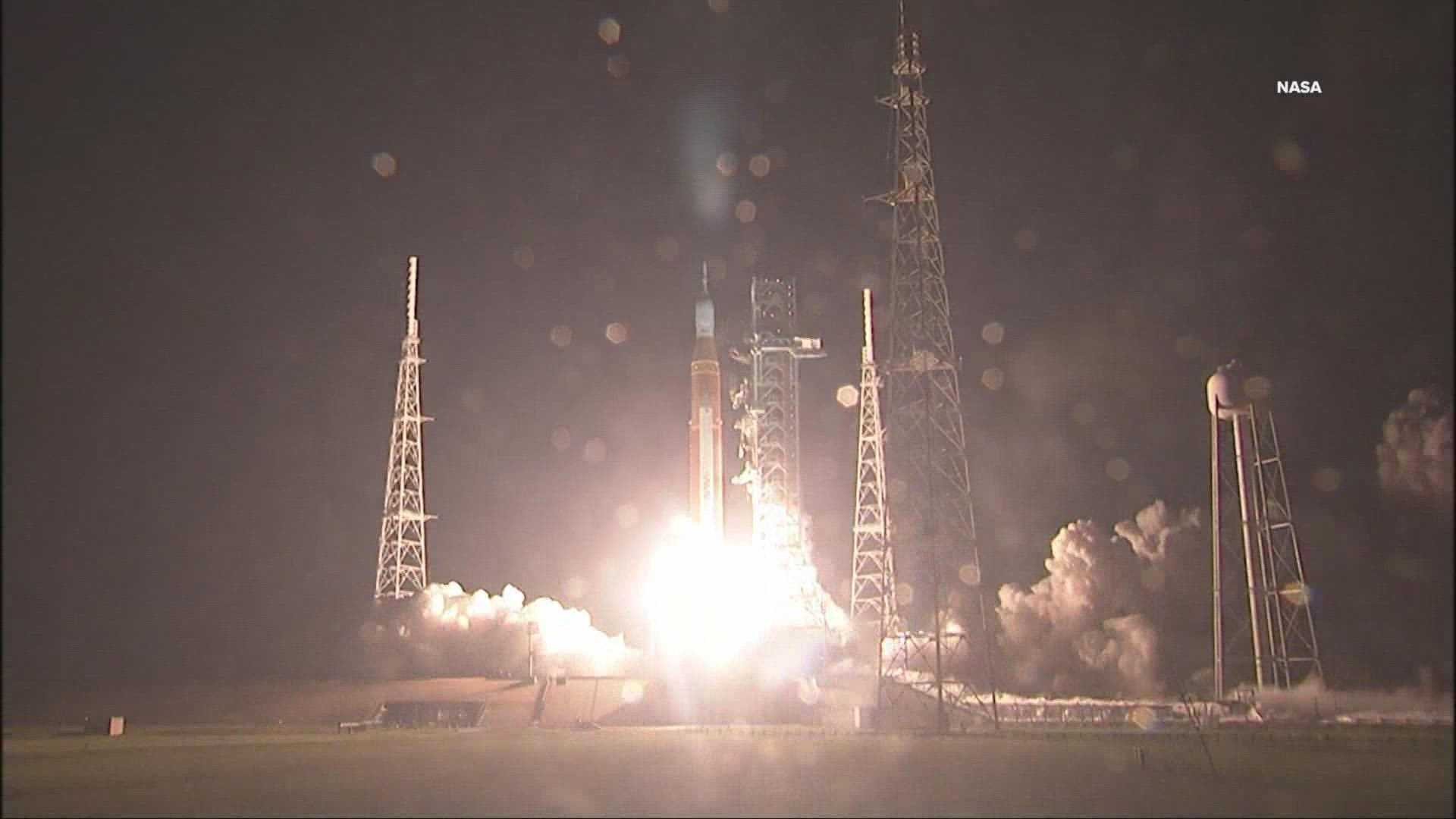CLEVELAND — Early in the morning on Wednesday, Artemis 1 launched from Florida, sailing high into the sky as it began its mission towards the moon and back. For 25 days, 11 hours, and 36 minutes, the rocket will travel into space, orbiting the moon before splashing back down off the coast of San Diego on December 11, according to information from NASA.
The mission of the Artemis program is to eventually return humans to the moon. While Artemis 1 is carrying mannequins, Artemis 2 will eventually transport astronauts, and Artemis 3 will ultimately return humans to the moon’s surface.
While the launch happened from NASA’s Kennedy Space Center in Florida, teams in Northeast Ohio played an important role in making the mission possible.
"You think of NASA, you might think of Houston or Florida, but Cleveland has a huge role, and Sandusky is part of that as well,” said Josh Freeh, manager of the human exploration and space operations office at NASA Glenn Research Center in Cleveland. “I think we've done a great job with this mission, we have a great team that's supporting it.”
According to Bryan Smith, director of Facilities, Test and Manufacturing at the NASA Glenn Research Center, NASA Glenn has been working on this program for at least a decade.
“Our contributions are with the Orion capsule on top of the rocket,” Smith said. “And within that capsule, we worked with international partners to develop basically the power and propulsion capability of the space craft.”
Sandusky played an important role in the mission as well.
“We were very fortunate to do the testing of the whole Orion vehicle in Sandusky, Ohio,” Smith said. “And another fact is that it will come back to Sandusky after it lands, so after it goes on this deep space journey, it comes right back to Cleveland.”
Scott Graham, associate director of the Space Flight Systems Directorate at NASA Glenn Research Center, said NASA Glenn has long supported lunar exploration missions.
“Our center here has been involved with lunar exploration since the very beginning,” said Graham. “We pioneered the use of liquid hydrogen as a rocket propellant here with the Centaur Upper Stage and the RL 10 rocket engine, and that liquid hydrogen propellant is used today, this morning, at the core stage of the SLS rocket.”
While it was a late night for many at NASA Glenn as they stayed up or set alarms to watch the launch, the team was also visibly excited.
“I got messages all throughout the night from the team both in Houston and in Florida supporting. Everybody’s very excited,” Freeh said. “Data looks good, they’re working through always a few little issues they have along the way, but nothing too major right now and just a really great mission so far.”
In his 40 plus years at NASA, Graham has been through many rocket launches, but still felt the excitement surrounding Artemis Wednesday.
“When we got close to liftoff, my heart was racing, you get that launch fever, that excitement,” he said. “There’s nothing like a launch, it really gets you pumped up, and I was certainly feeling it. I’m so happy and grateful that everything so far has worked pretty much flawlessly.”
Graham called the launch historic, likening it to the first launch of the Saturn 5 moon rocket. He also called Artemis the world’s most powerful rocket.
“It’s 50 years since we’ve been back to the moon, and having that capability is very exciting,” said Smith.
While the excitement is palpable, all three men acknowledged the work still being done, and the engineers and teams focused in on making this a successful mission. Freeh said the gravity of the accomplishment has probably not sunk in yet for many.
“We’re mostly engineers and scientists here, and we’re really watching the data,” he said. “Really until we get the mission all the way back and successfully back on the ground and get all the data back, it will start to sink in a little bit. But it’s going to be 25, 26 days of a full mission here. It’ll sink in here over time, but we’re still in the mission mode right now.”

